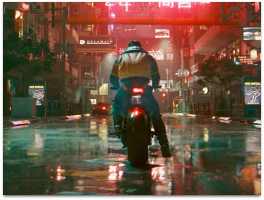Advanced Graphics
Universiteit Utrecht - Information and Computing Sciences
academic year 2023/24 – 2nd block
 |
 |
 |
Advanced GraphicsUniversiteit Utrecht - Information and Computing Sciencesacademic year 2023/24 – 2nd block |
|||
|
Navigation |
||||||||
|
|
||||||||
News
|
|
Recent news
Nov
2:
Older posts will be available here. |
Format and Organization
|
|
Overview The master course Advanced Graphics addresses
advanced topics in 3D computer graphics. The focus of
the course is Physically-based rendering of 3D
scenes. The course has two main focus areas: Rendering
Algorithms and Making Rendering More
Efficient. Efficiency will be sought through Acceleration Structure
Construction and Traversal
and Variance
Reduction (rather than low level
optimization). The course starts with a recap of Whitted-style ray tracing. We then explore various acceleration structures that help to run the ray tracing algorithm in real-time on commodity hardware. We will see that a well-built Bounding Volume Hierarchy provides both flexibility and speed, for static and dynamic scenes. The second part of the course introduces the path
tracing algorithm, and related light transport theory.
We investigate various methods to improve the efficiency
of the algorithm using probability theory. We will see
that efficient path tracing can yield interactive frame
rates. In the third part of the course we use GPGPU to run ray tracing and path tracing on the GPU. We will explore recent research in high performance stochastic rendering.
You will have practical experience in the following
topics:
You will have a reasonable grasp of several related
topics:
Lecturers: Jacco Bikker (j.bikker@uu.nl)
Lectures will be recorded for those that cannot be
physically on campus, and for later reference. Practicals Final Exam
|
Topics |
|
|
|
Downloads
|
|
LECTURE SLIDES and RECORDINGS Links to lecture slides will be made available during
the block.
Please find recordings for the course in Teams. SUPPLEMENTAL MATERIAL
VoxelWorld template is also available on GitHub. |
Practical
Assignments
|
|
The course includes a software project that should be
worked on in pairs. It is allowed to work on this alone,
but be aware that the scope of the project is tuned for
duos. There are two milestones for this project:
The final grade for the software project is calculated as
follows: practical grade = (P1 + 2 *
P2) / 3
|
Grading
|
|
GRADING In order to pass the course, you must meet these
requirements: Practical grade P = (P1 + 2 * P2) / 3 Where P >= 4.5 RETAKES AND REQUIREMENTS There will be an opportunity for a retake exam or a retake assignment. In order to qualify, a grade of at least 4.0 is required in both areas (final exam, practicals). The retake exam or assignment replaces the matching exam or assignment. IMPORTANT: you
can only take the retake exam if you have both a
high-enough but non-passing grade (i.e., at least 4.0
and less than 5.5).
If you are retaking this course it may be possible to transfer partial grades to this academic year. This is only possible for practical assignment grades; if you are retaking Advanced Graphics, you must retake the exam. Contact me for details. |
Literature & Links
|
|
LITERATURE
Recommended literature PAPERS & ONLINE MATERIALS |
News Archive
|
|
Old posts Old posts will be moved here. |